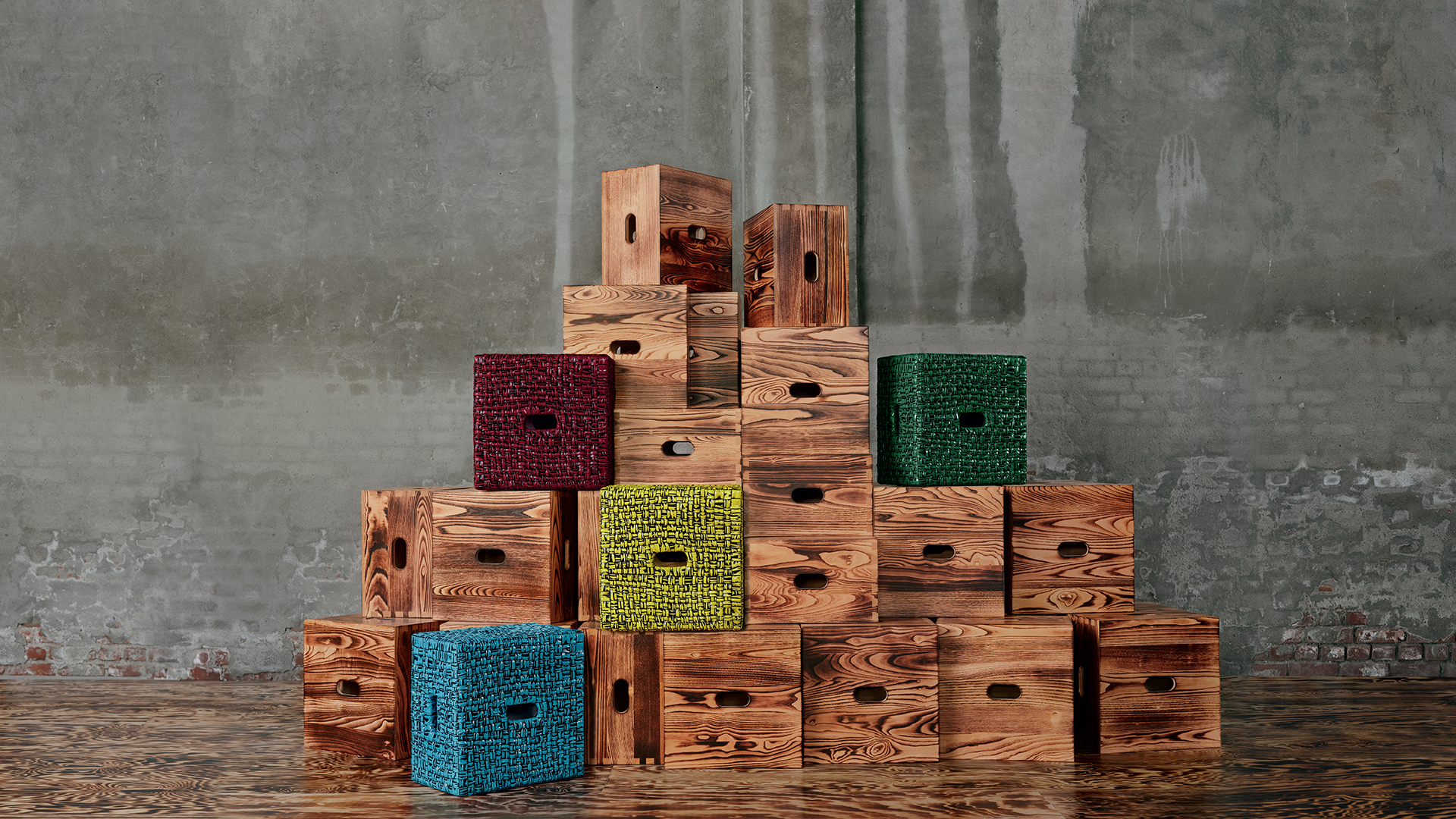
As Salone del Mobile 2024 and the wider Milan Design Week got underway this week in the design capital, one thing quickly became clear: the majority of the fashion contingency among the schedule was in a reflective mood.
While some brands looked to design masters past, others mined their archives: Bottega Veneta worked with the Le Corbusier Foundation to re-interpret its LC14 Tabouret Cabanon stool; Yves Saint Laurent collaborated with the Gio Ponti archive to create an exclusive porcelain collection; and Gucci presented archival re-editions in its now-signature Ancora red from the likes of Tobia Scarpa and Venini.
Elsewhere, Hermès and Armani placed their new furniture and design creations beside the sartorial objects that inspired them (with Giorgio Armani sharing personal photographs that span his career) and Loewe worked with its Craft Prize alumni to create 26 unique lamps that spotlighted the time-honed craft techniques that still exist around the world.
It’s a move that reflects a recent trend in their primary medium of fashion, where reminders of iconic codes are increasingly served up to highlight the importance of respecting the signatures that stand the test of time.
Here, in our comprehensive round-up, is the Wallpaper* edit of the best fashion moments at Milan Design Week 2024.
Fashion moments at Salone del Mobile and Milan Design Week 2024
Armani Casa
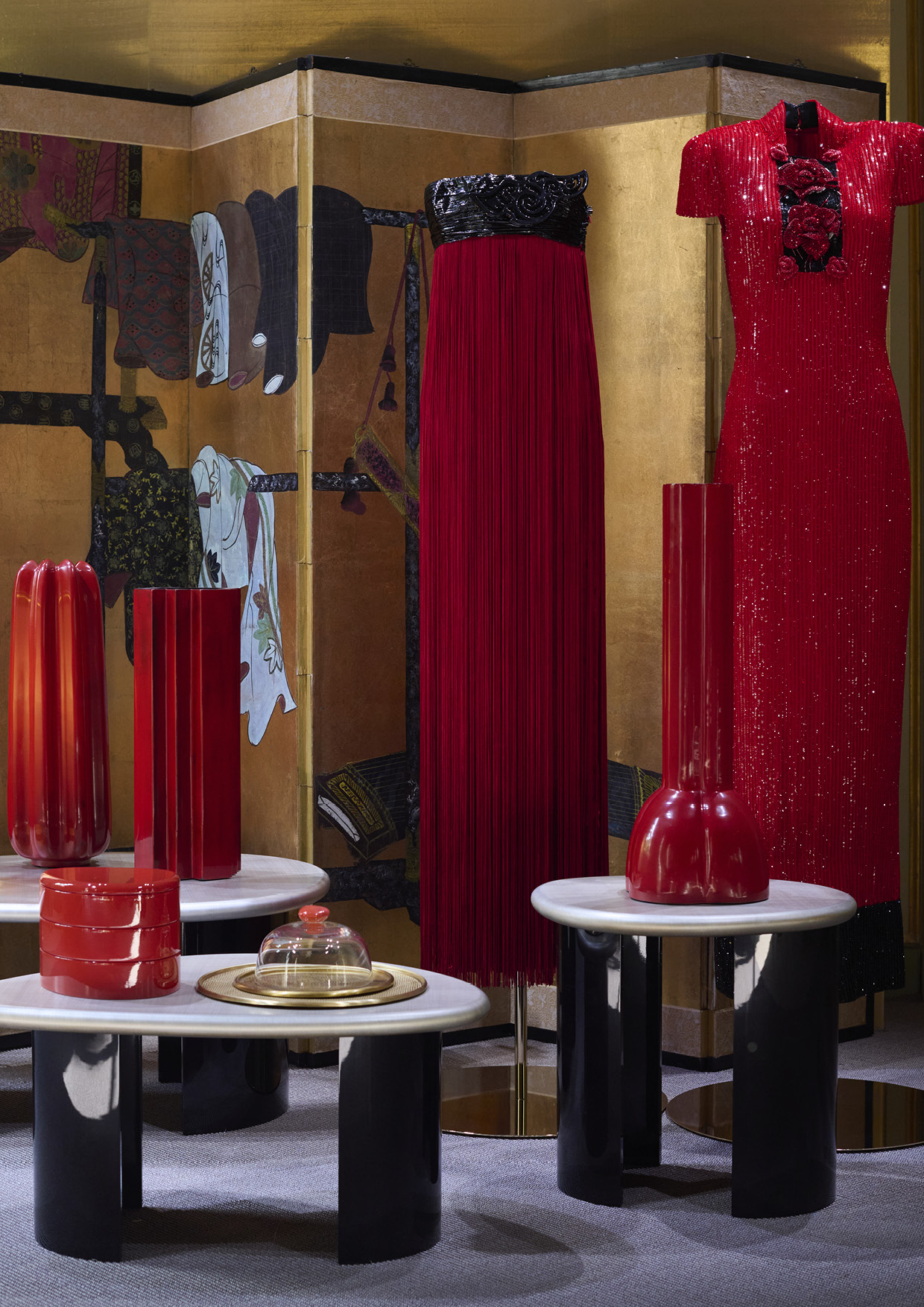
Held once again in Palazzo Orsini on Via Borgonuovo (also known as Armani HQ), Armani Casa’s Salone installation took visitors on a journey of the places founder Giorgio Armani has been most inspired by during his illustrious career. His travels have taken him far and wide – all over Europe, as well as Japan, China, Saudi Arabia and Morocco – and over the years, homages to the craft and skill he has discovered in each have appeared in his ready-to-wear collections. For this installation, called ‘Echoes From The World’, he placed his exquisite couture creations and his own personal collection of souvenirs (from Samurai swords to kimonos) alongside new pieces of furniture such as the Venus console with a hand-painted lacquered glass top backed in gold-leaf to give a luminous shimmer in the room dedicated to China and the blue velvet bed in the room celebrating Morocco that took months to make (only seven centimetres of this fabric can be woven in a day and this bed took 12 metres of material). A highlight waiting at the end of the show was a room with supersized images from Armani’s private photo album in a few of the locations celebrated here. ‘For this edition of the Salone del Mobile, I imagined a “cinematic” journey to the countries that have always inspired me: places and cultures that spark highly personal reworkings,’ shared Armani, adding: ‘I like to present myself to the public in the most authentic and direct way possible.’
Hermès
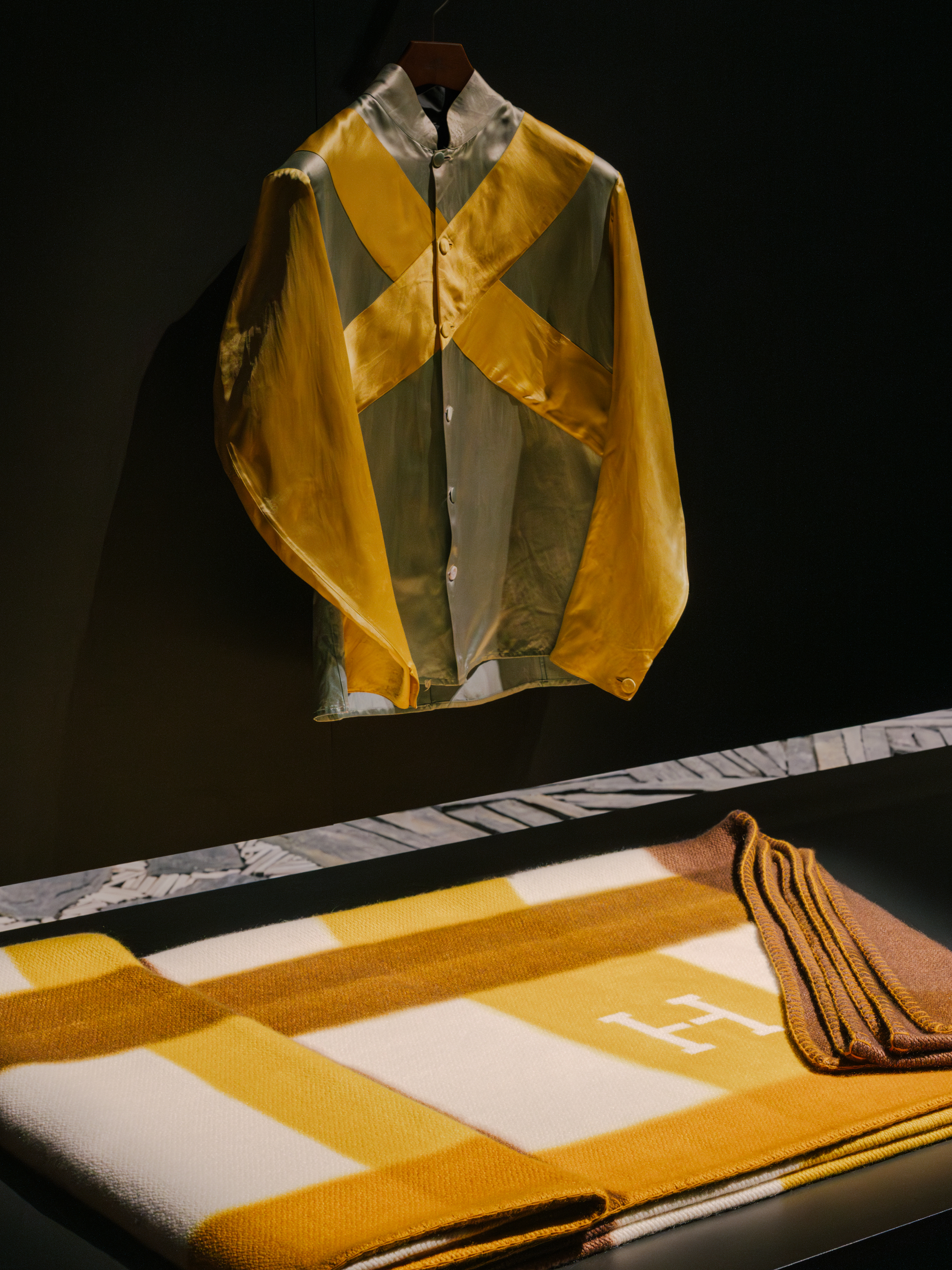
Taking over the sprawling La Pelota space for the week, Hermès presented ‘Topography of Material’, an installation conceived ‘to create a dialogue between roots and movement, between materials and know-how’, shared the brand. Suspended below foot-level on a diagonal catwalk of sorts, guests were welcomed by 16 intersecting floors that brought together 16 different types of stone, ten types of earth, four types of wood and many variations of terracotta brick all sourced from either Italy or France arranged in intricate ways to celebrate the skill of timeless handcraft. It formed a powerful introduction to the presentation of objects itself as this year Hermès made a point to highlight its own enduring codes. Behind a 35m-long and 6.m-high suspended black wall lay objects from the house’s archive juxtaposed with recent masterpieces and objects making their debut. For example, the silver Timour choker necklace from 2002 sat beside the new Diapason D’Hermès chair designed by the Hermès Studio this year in homage to the piece of jewellery; the original Mangeoire pouch from 1949 (used to feed horses) stood beside the new Derby leather buckets, also launched this year; and the Drag travel bag from the 2010s was presented next to Jasper Morrison’s Equilibre chair for Hermès from 2020. As intended, it effectively presented the virtues in time-honed skills and luxurious designs that retain a forever relevance.
Valextra
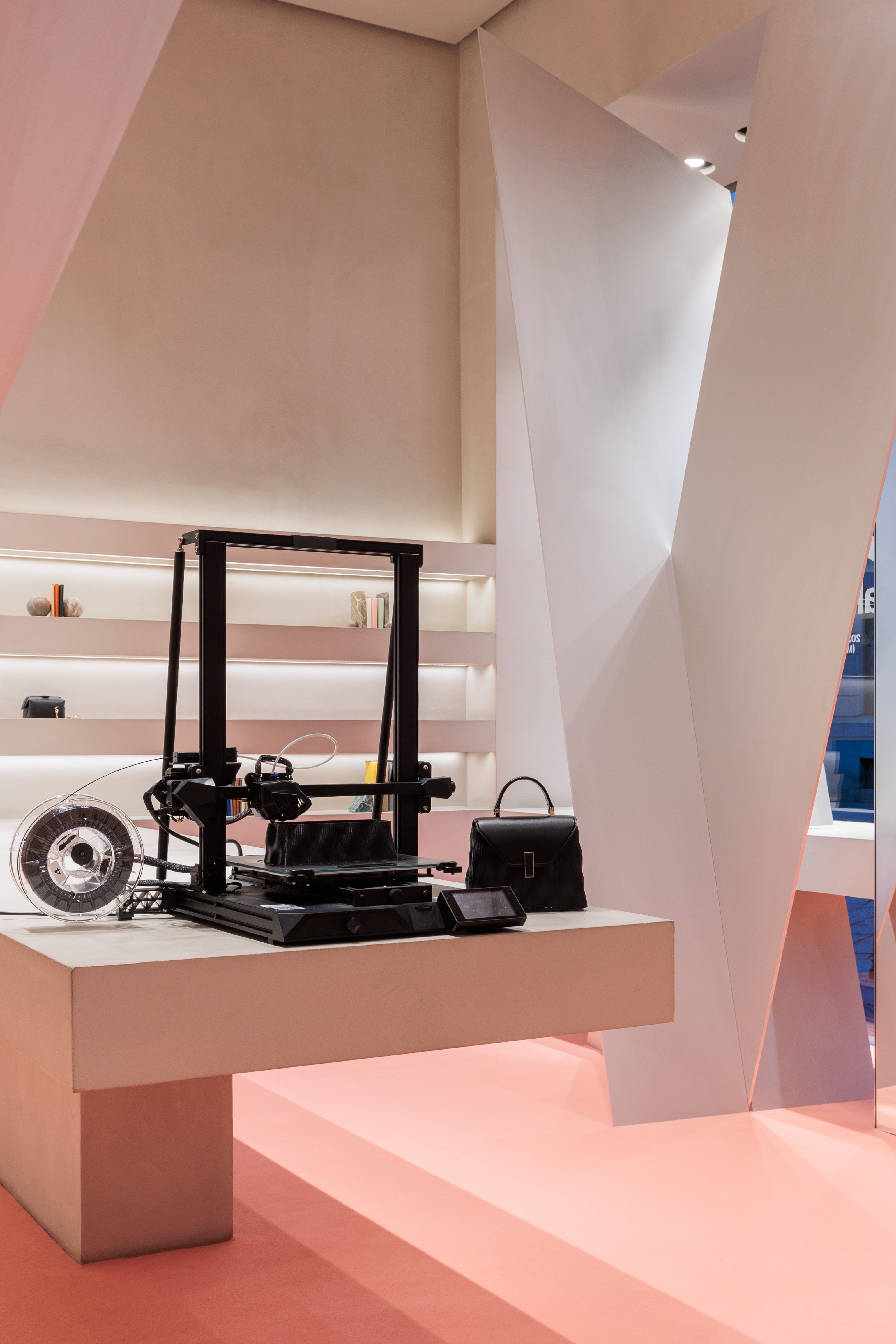
Valextra worked with Bergamo-based Studio Temp (with whom it also collaborated for Casa Valextra) on its Valextra Vocabolario concept that transformed its John Pawson-designed Via Manzoni flagship into the Valextra Spa. The idea was to highlight the exceptional care that goes into each of Valextra’s leather goods, from the hands that craft them to the after-care that the brand offers its clients. Inside a huge, simulated sauna, guests were invited to sit and observe the brand’s artisans hand-painting its signature black lacquered Costa edging onto handbags in real time. In the pink-carpeted space around, the brand’s new Assoluto collection – a three-piece capsule crafted from Econyl – was unveiled as machines worked in real time to 3D-print the new Iside Onda handbag. Combining state-of-the-art handbag development and best-in-class customer service through a radical architectural lens, it beautifully captured the DNA of this Milanese brand.
Bottega Veneta
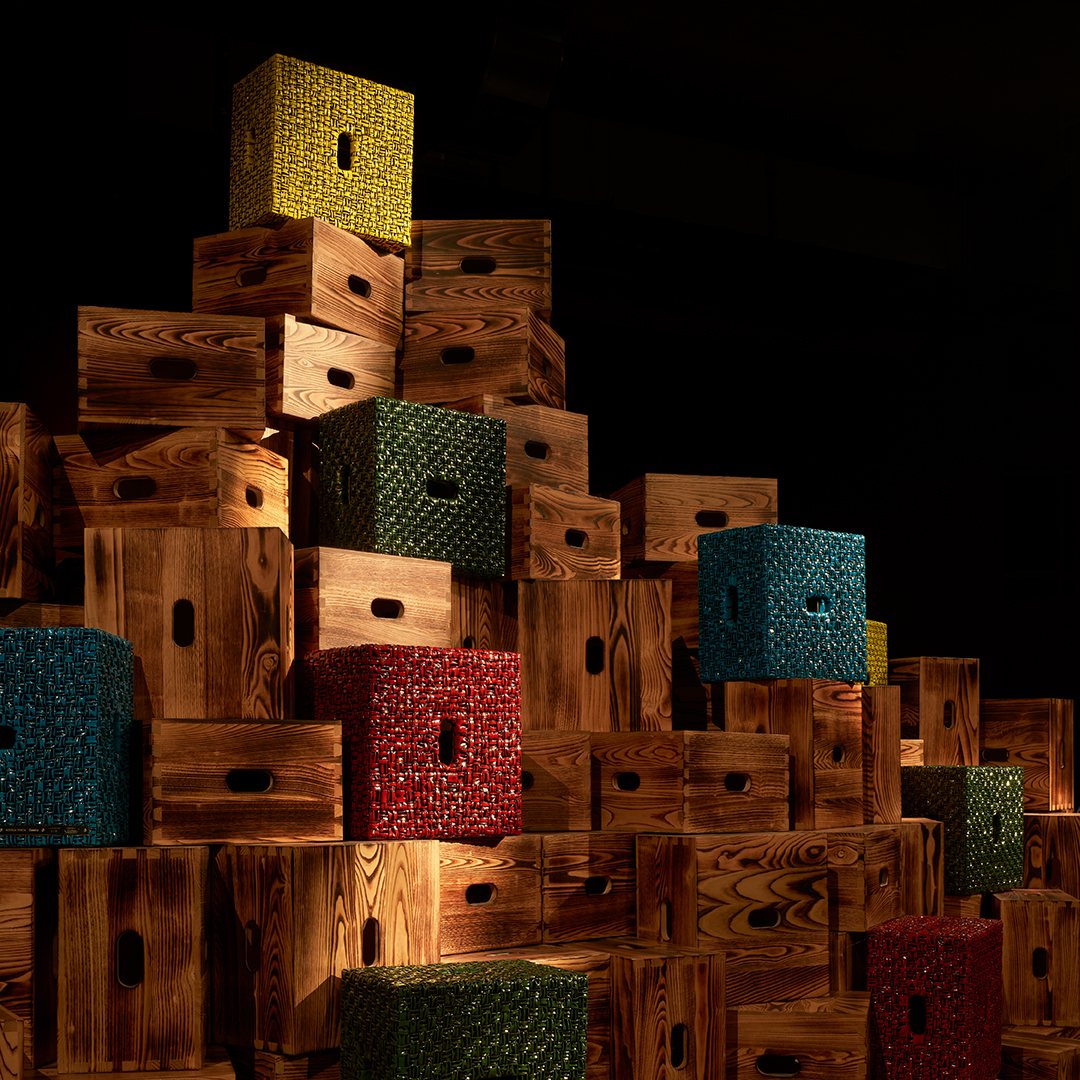
Bottega Veneta presented ‘On The Rocks’ at the Palazzo San Fedele, a special location for the house as it was the setting for creative director Matthieu Blazy’s first show and is its soon-to-be HQ. Partnering with Cassina and Fondation Le Corbusier, the brand honed in on the iconic LC14 Tabouret Cabanon stool that it described as ’a timeless icon of Le Corbusier that embodies the excellence of the Cassina carpentry workshop’. First conceived by the designer for his Côte d'Azur cabin, it was inspired by a washed-up whisky box he found on the shores beneath the residence, hence the title of the installation, which saw several iterations piled high, one on top of the other, reminiscent of a jagged coastline. This isn’t the first time Blazy has affiliated himself with the object; at his recent A/W 2024 womenswear fashion show set, guests sat on bare wooden versions. For Salone, they came in the same rendering but also covered in the brand’s famous intrecciatio leather to create 160 limited editions.
Loewe
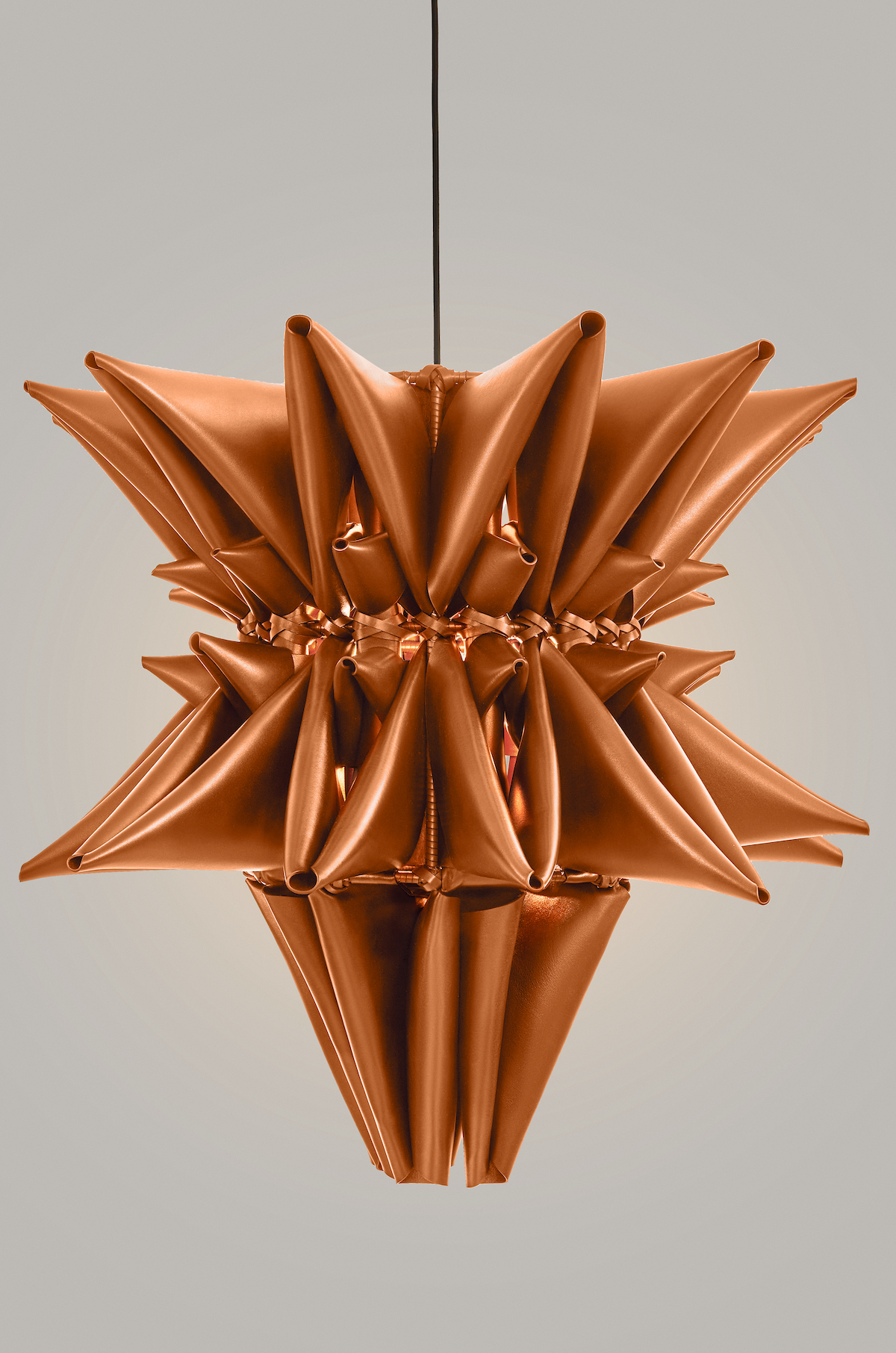
Loewe creative director Jonathan Anderson primarily worked with alumni from the brand’s prestigious Craft Prize on his first-ever lighting installation at Salone del Mobile. Staged at Palazzo Citterio in the heart of the Brera Design District, the presentation featured one-of-a-kind lighting designs from 24 artists who the brand has either worked with or supported in the past. Remarkably, it was the first time that any of the featured makers had worked with light, which accounted for the originality on display. From Enrico David’s curved Onyx table lamp that features the face of a woman on closer inspection and Dahye Jeong’s spherical structure using an ancient weaving technique using horsehair, to Young Song Lee’s hollowed-out calabash fruits covered in twisted mulberry-tree paper and Dame Magdalene Odundo’s cinched leather hanging lamps (above), each captured the celebratory spirit of Loewe in the world of craft and design that promotes and helps preserve the most exquisite techniques from all over the world. While each of the 24 pieces was for sale at the start of the week, by 5pm on the second day the majority were – predictably – all snapped up.
Gucci
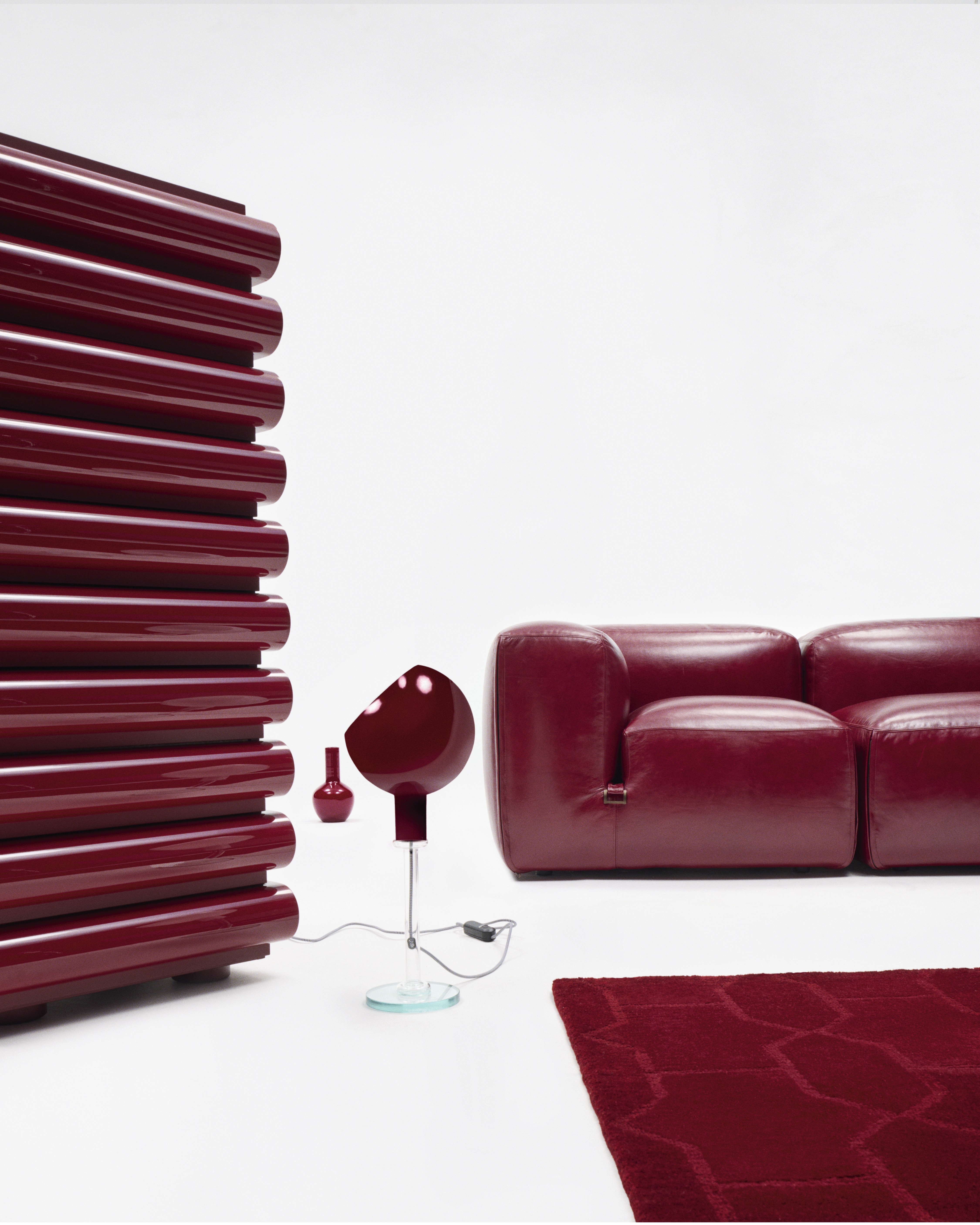
Gucci’s creative director Sabato de Sarno’s ‘Ancora’ campaign continues to thrive in Milano as the brand unveiled Gucci Design Ancora in its newly reopened flagship on Via Montenapoleone. Entering through a carpeted staircase surrounded by lacquered walls in the dark red ‘Ancora Rosso’ hue that is a signature of the De Sarno era at Gucci, visitors were presented with an antidote in acid green when they reached the top. Inside this starkly saturated mini maze, architected by Guillermo Santomà, were five objects De Sarno had chosen from several Italian masters over the years that had been re-issued in the Ancora-red hue for the occasion. The Le Mura sofa by Mario Bellini for Tacchini from 1972; the Clessidra rug from an iconic design of Piero Portaluppi made by CC-Tapis; the Storet tallboy by Nanda Vigo for Acerbis in 1994; the Opachi vase by Tobia Scarpa for Venini in 1960; and the Parola lamp by Gae Aulenti and Piero Castiglioni for FontanaArte in 1980 each stood in their own space to be admired from all angles. ‘Through Design Ancora, Gucci doesn’t simply celebrate old icons, it creates new ones,’ said Michela Pelizzari, founder of P:S Agency, which co-curated the project. ’The aura emanating from the brand spotlights five pieces by Italian masters that are perfect from a design standpoint but less known to the general public.’
Thom Browne
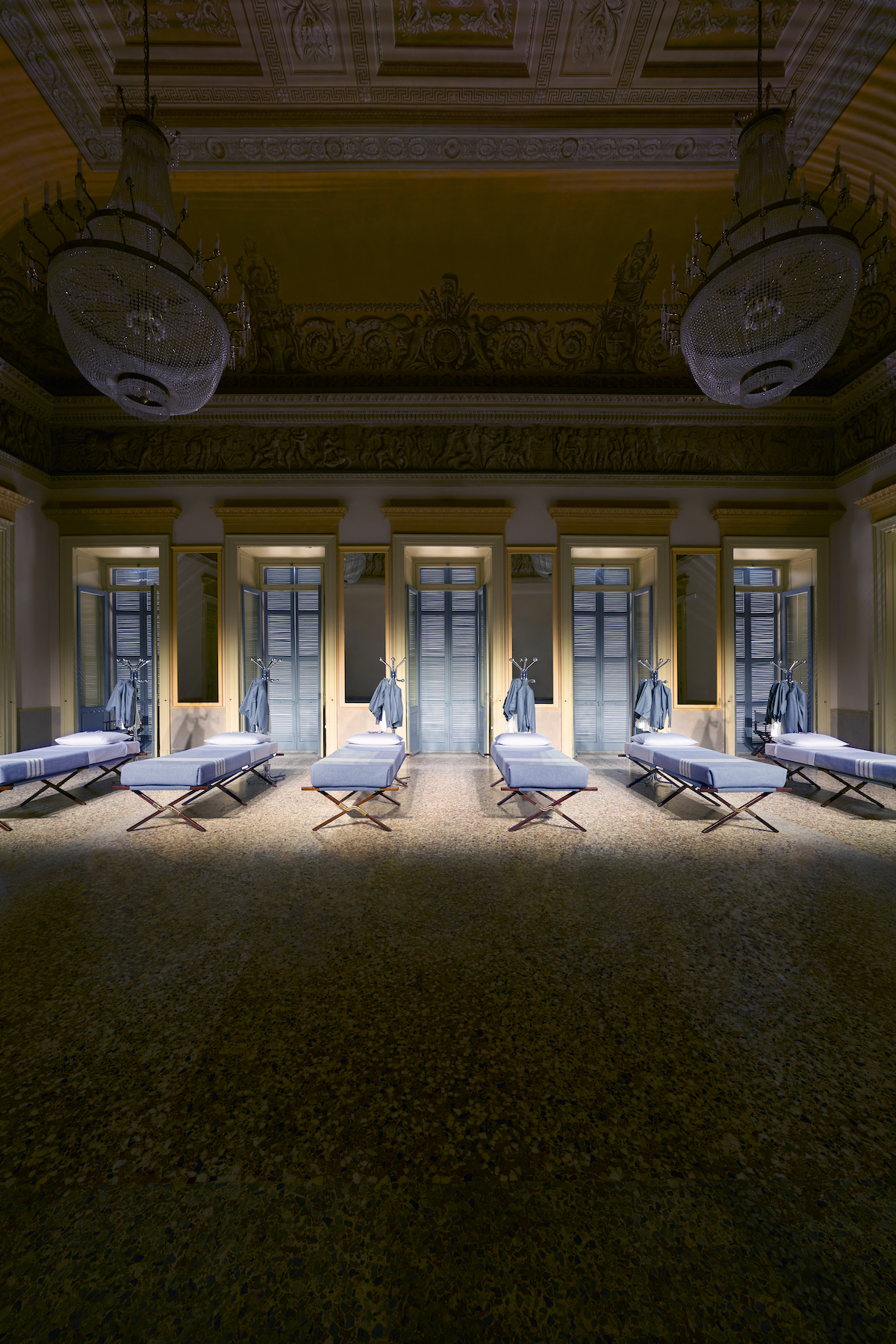
For his Salone del Mobile debut, Thom Browne took over the Palazzina Appiani to unveil his collaboration with the 160-year-old home textiles expert Frette with his performance, entitled Time To Sleep. True to his reputation for subverting traditional settings and concepts into unexpected scenarios, Browne placed six identical beds under the frescoes in the Hall of Honour and had models undress themselves before getting into bed. In the models’ getting dressed, rather than undressed, to sleep, Browne intended to ‘challenge the audience to question the role of dress in public life’, highlighting that the act of sleeping is just as important as the hours we are awake. ‘I think it's so much more interesting, and it elevates the product launch, when you create an installation that transcends the specific world that it’s in,’ Browne told Wallpaper* during rehearsals for the performance. The collection, which is available immediately, comprises sheets, blankets, terry-towel and cashmere robes, bath towels, and a quilted bath mat in crisp white cotton-sateen. ‘The reason I wanted to work with Frette is because they’re the best at what they do,’ added Browne.
Saint Laurent
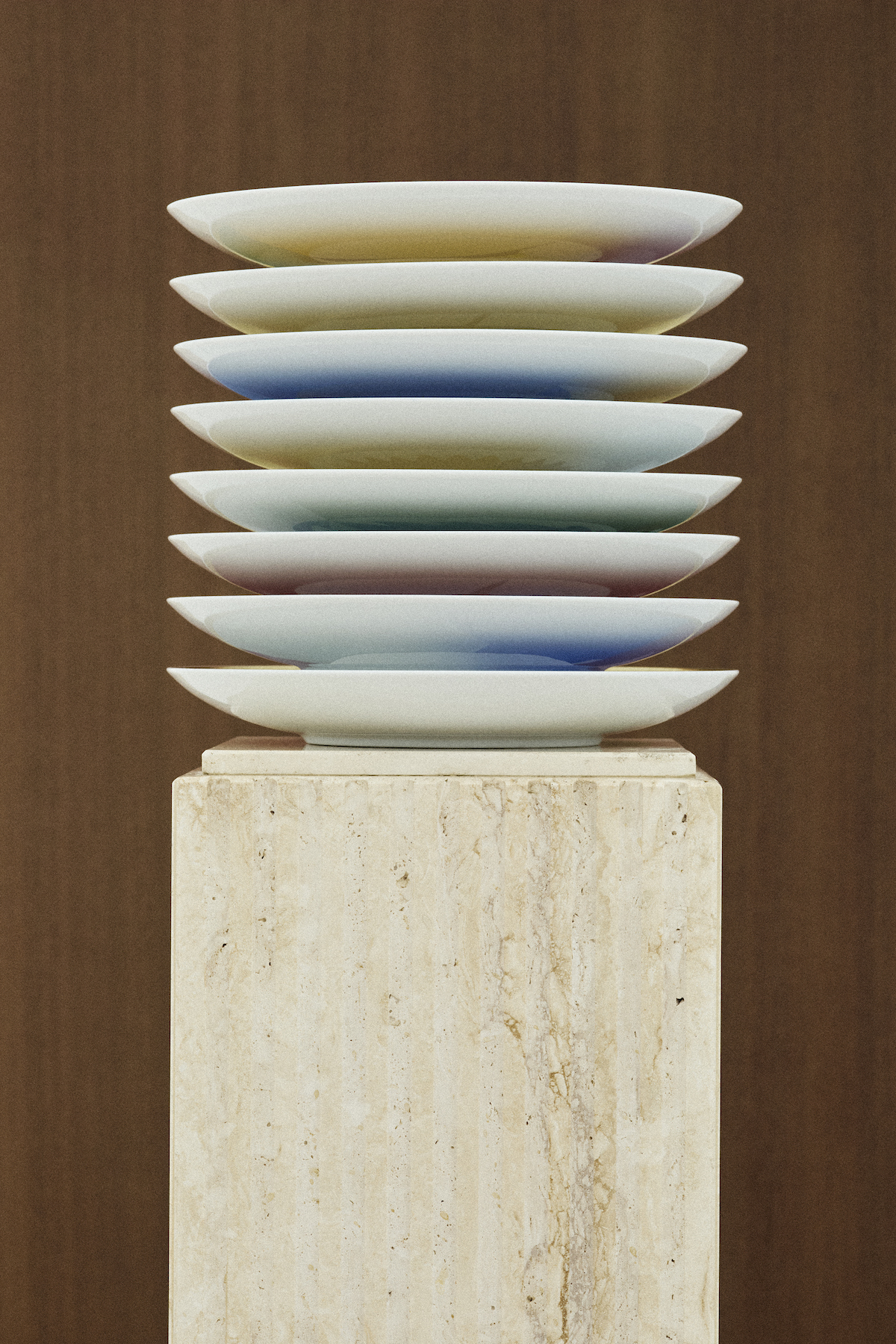
The Paris-based house turned the clock back to 1953 and the private collection of Anala and Armando Planchart who commissioned the legendary architect Gio Ponti to mastermind their hilltop Venezuelan villa overlooking Caracas. On finishing the project, Ponti commissioned artisans from his native Italy to help furnish the space and turned to Ginori 1735 to create a collection of porcelain plates featuring motifs from around the villa and the couple’s initials. It is these plates that creative director Anthony Vaccarello curated and had reissued by the ceramic experts for Saint Laurent’s special installation in the cloisters of the Chiostri di San Simpliciano. Displayed in oscillating tubes on a raised platform that mirrored the height in which they originally lived in Villa Planchart Segnaposto, the presentation marked a coming together of multiple design icons.
Prada
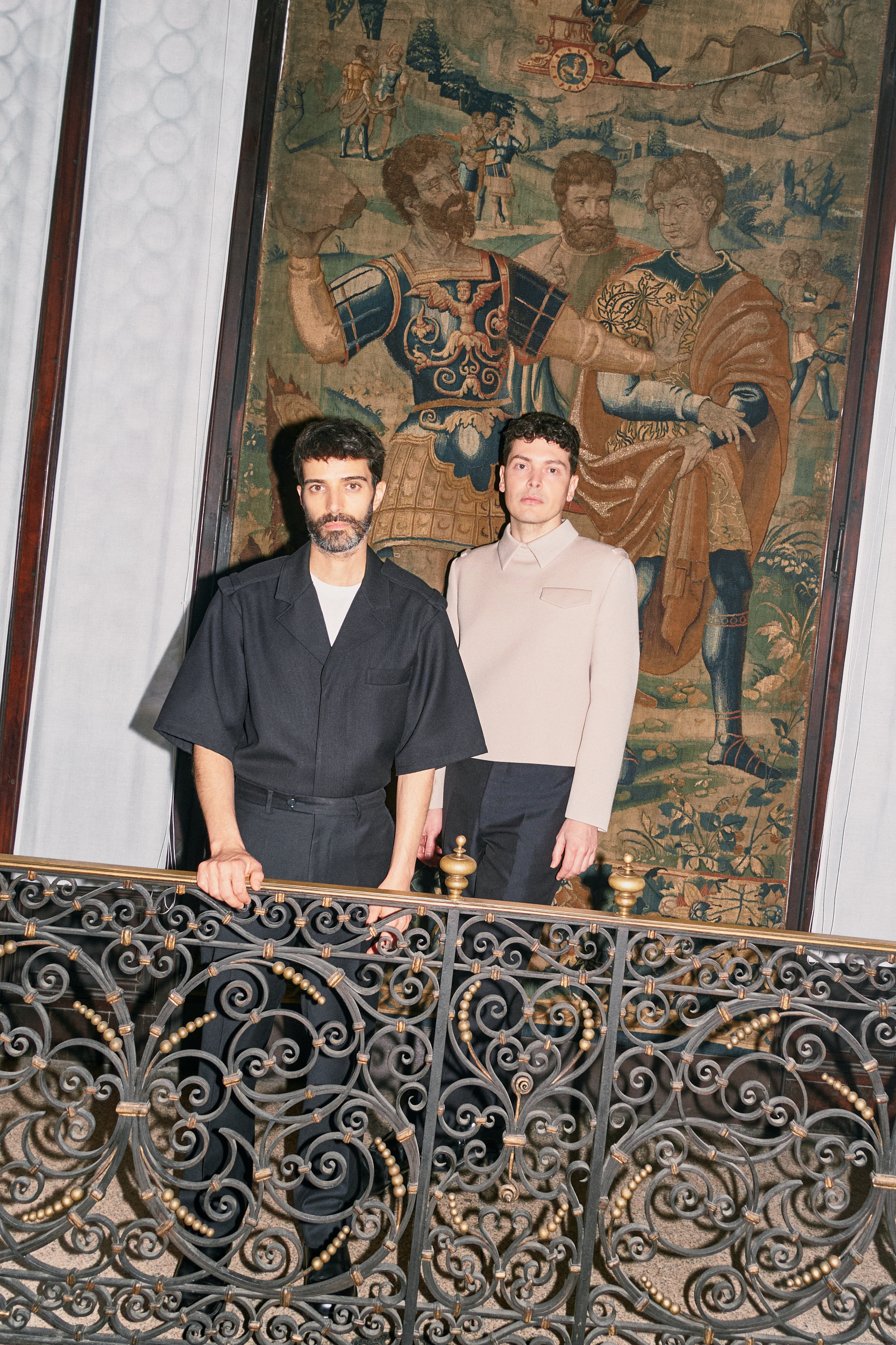
Once again collaborating with FormaFantasma (above), Prada staged its Prada Frames seminar discussions on the theme of Being Home. Throughout the week, luminaries in different fields came together – including Paola Antonelli, Brigitte Baptiste, Kate Crawford, Jack Halberstam and David Van Severen – to cover myriad topics that were contextualised by Alice Rawsthorn. Each of the 17 sessions took their leave from different rooms around the home: for the bedroom, Gulsum Baydar and Philippe Rahm discussed the bedrooms role as a comfort zone; for the living room, Jayden Ali and Jack Halberstam were in conversation with Andrés Jaque exploring the rituals of diaspora communities in architectural spaces; and in the library, Isabella Rossellini and Mary Kuhn examined the relationship between humans and nature in the home, past and present. Staged each year to invite people out of their everyday lives and explore new and alternative analysis of familiar situations, it continues to be a highlight. Read more about Prada Frames.
Issey Miyake
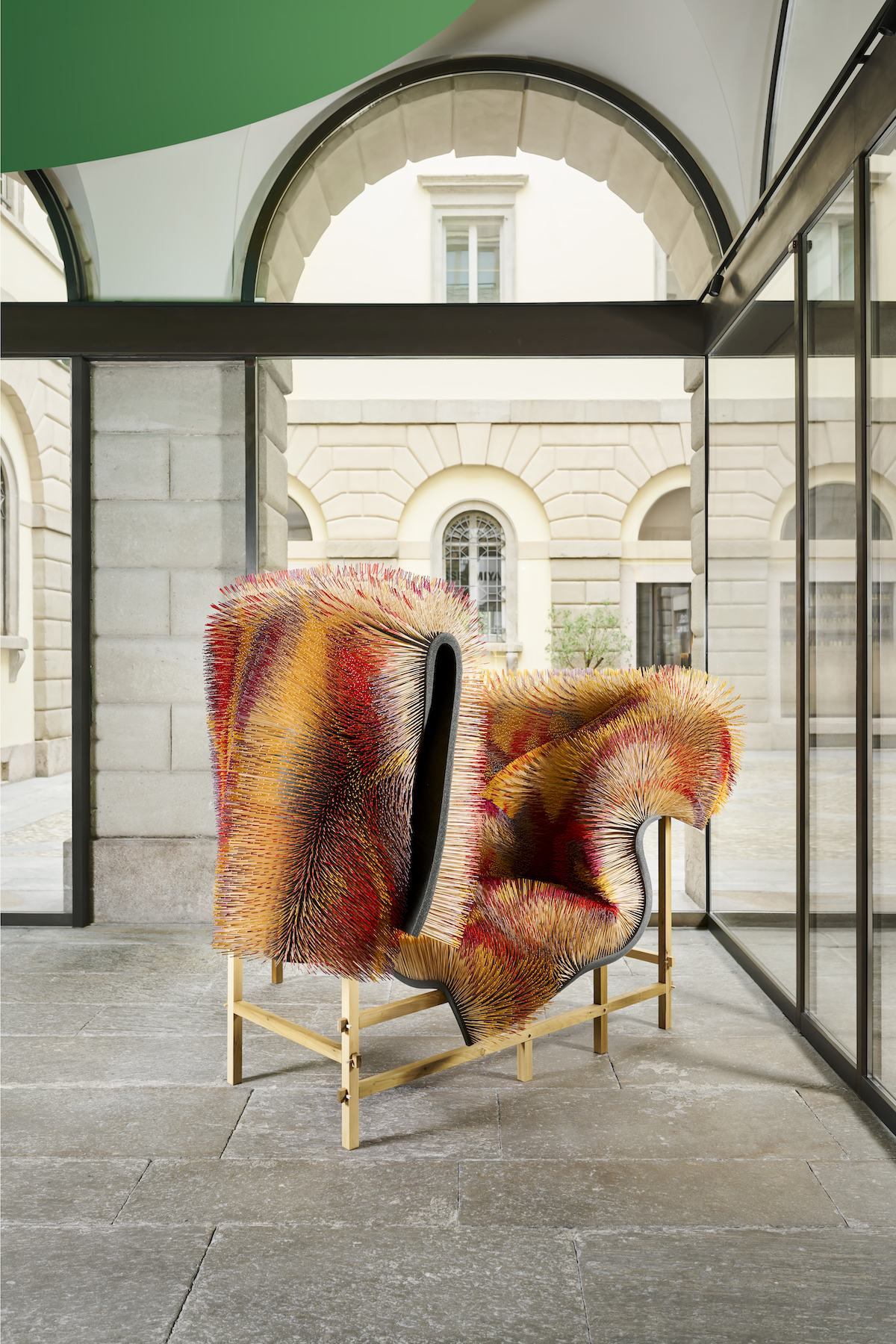
60,000 bamboo skewers were used to create the one-of-a-kind carpet collaboration between Issey Miyake and the Dutch collective We Make Carpets. Famous for transforming everyday objects into artistic works of beauty, the artisans channelled Issey Miyake’s own skill at finding the sweet spot of robust-delicacy with the piece that was created by inserting the skewers one by one by hand into a thick piece of foam. The resulting patterns emerged organically as their dipped ends started to create surface patterns. Issey Miyake praised the group’s tenacity in making something meaningful without the need for ‘fancy gadgets and advanced technologies’, praising their labour-intensive and synchronised teamwork in bringing the piece to life. Transported flat to Milan city centre from where it was crafted in the Netherlands, in a nod to the national emblem it was presented resting on wooden beams at the Via Bagutta flagship.
Versace
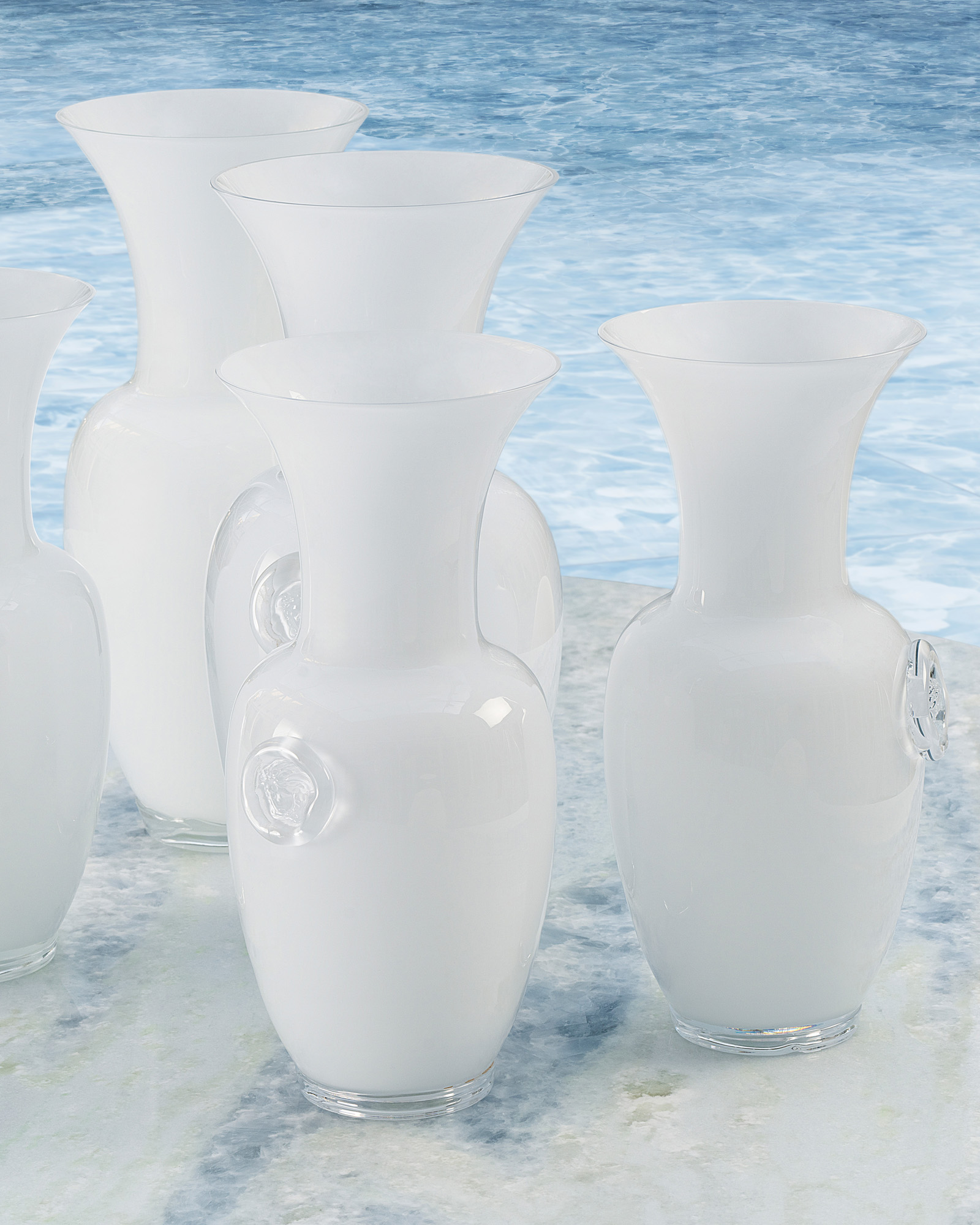
‘If These Walls Could Talk’ is an apt name for Versace’s Salone del Mobile presentation staged in its original atelier, the Palazzo Versace on Via Gesu. As many a fashion aficionado will know, it is at this residence that many of the fashion house’s famous catwalk shows have taken place over the years (including that 1991 show that birthed ‘the supermodel’) and where many of its globally recognised logos and icons were first designed, including the Medusa, Barocco and Greca emblems. They were omnipresent through this presentation that guided visitors from room to room, with even more opulence around each corner – an experience heightened by an audio experience created in collaboration with Radio Raheem for each space. They featured pieces new and reworked including The Medusa ’95 Conversational Sofa, the La Greca Bed and the Lady Desk, each a conversation starter in the space they stood.
Loro Piana
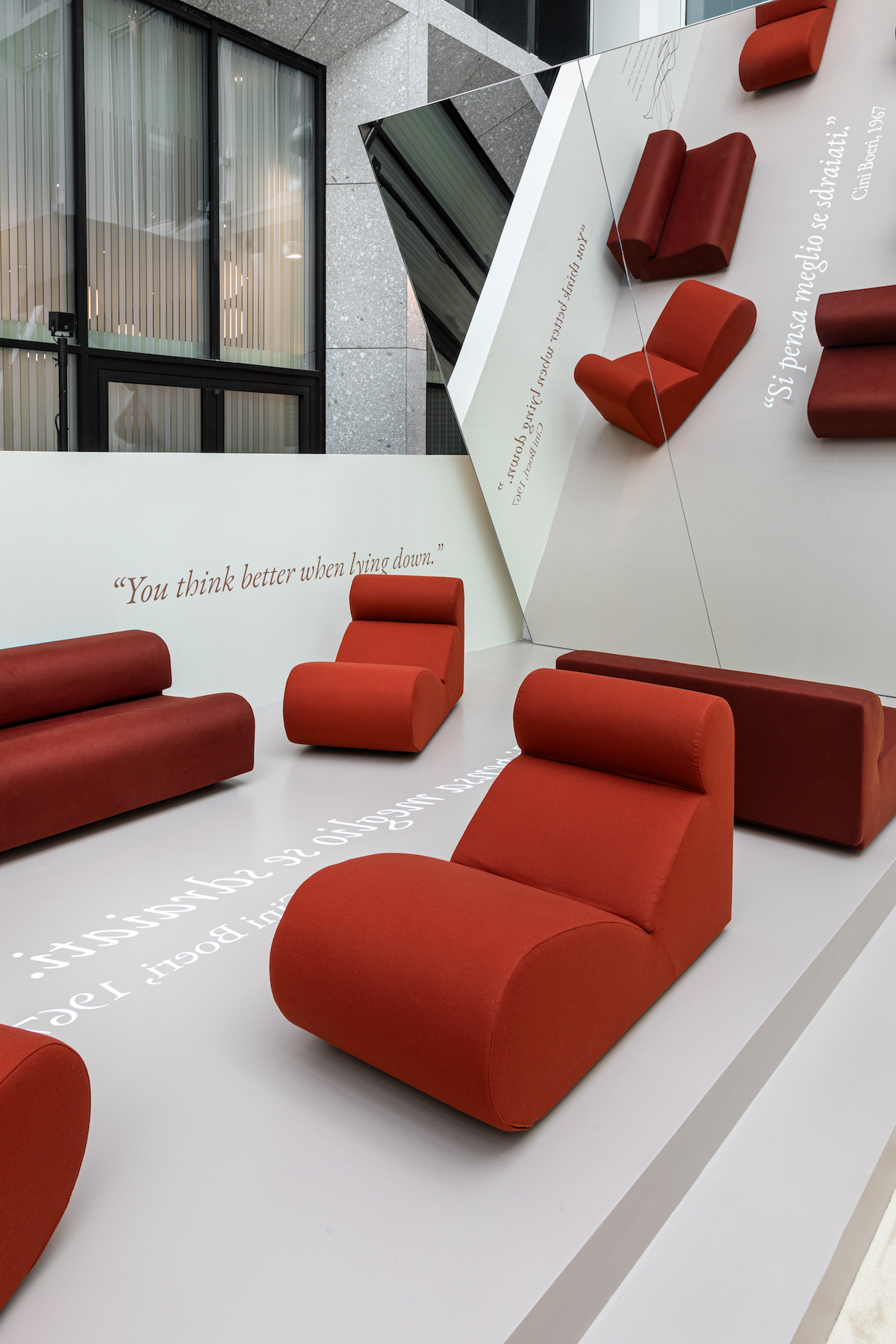
Paying tribute to the late Milanese designer and architect Cini Boeri, Loro Piana showcased the most iconic pieces from her archive and presented them in its famously luxurious interiors fabrics. The collaboration with the official archive of Boeri, marks not only what would have been the year of Boeri’s 100th birthday, but the year Loro Piana also celebrates its centenary. Honouring Boeri’s insistence that furniture should be engaged with at all times, visitors to the presentation were encouraged to touch and sit on the pieces as they moved through the space. ’The thinking of Cini Boeri is extraordinarily contemporary,’ shared Francesco Pergamo, Director of Loro Piana Interiors. ’Just as extraordinarily contemporary remain the pieces we have chosen to exhibit together with Arflex and Archivio Cini Boeri, and to dress with our fabrics.’ Featured in the presentation are the famous modular Strips system, that won the prestigious Compasso d’Oro in 1979, the corresponding bed, the Bobo and Boborelax armchairs and the Botolo Chairs that have been covered in the brand’s ‘cashfur’ and made in a limited edition of 100. ’The dual centenary of Cini’s birth and the founding of Loro Piana has offered us the opportunity to contribute to the appreciation of the architect's figure,’ added Pergamo, who revealed plans to work with the archive on additional projects over the next three years.
Fendi Casa
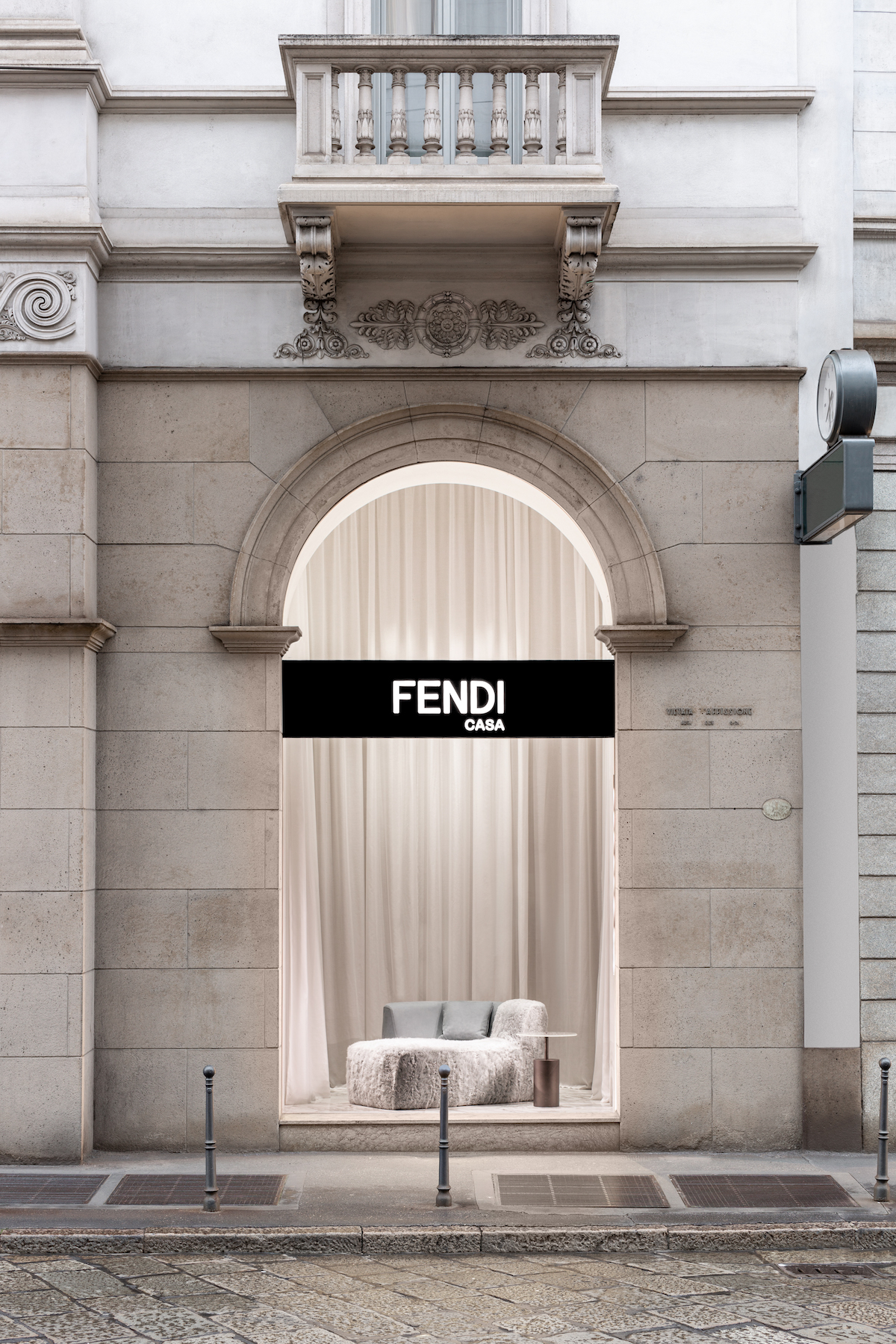
Welcome to the world of Fendi Casa where the family keeps growing. This year, the Via Manzoni space was masterminded by Silvia Venturini Fendi and realised by Controvento creative collective. Together, they kept the house’s ‘double F’ logo of the house front and center, creating intimate spaces that invite people to cosy up, much like the emblem. The perfect example lies in the new Fendi F-Affair sofa by Controvento that is an interlocking platform of seats and suspended tables presented with a champagne bucket and glasses. It was joined by other collaborations in the sumptuous sofa department, the F-Stripes by Ludovica Serafini and Roberto Palomba and the Sohoft by Toan Nguyen. Existing families grew their brood, too: Thierry Lemaire’s Parsifal sofa was joined by the Mrs Parsifal armchair; Stefano Gallizioli’s Adrianand’s Audrey chair was complemented with square-shaped Audrette chairs; and Cristina Celestino's Ottavia chair was delivered of a sister, the Lazy Ottavia armchair.
Zegna
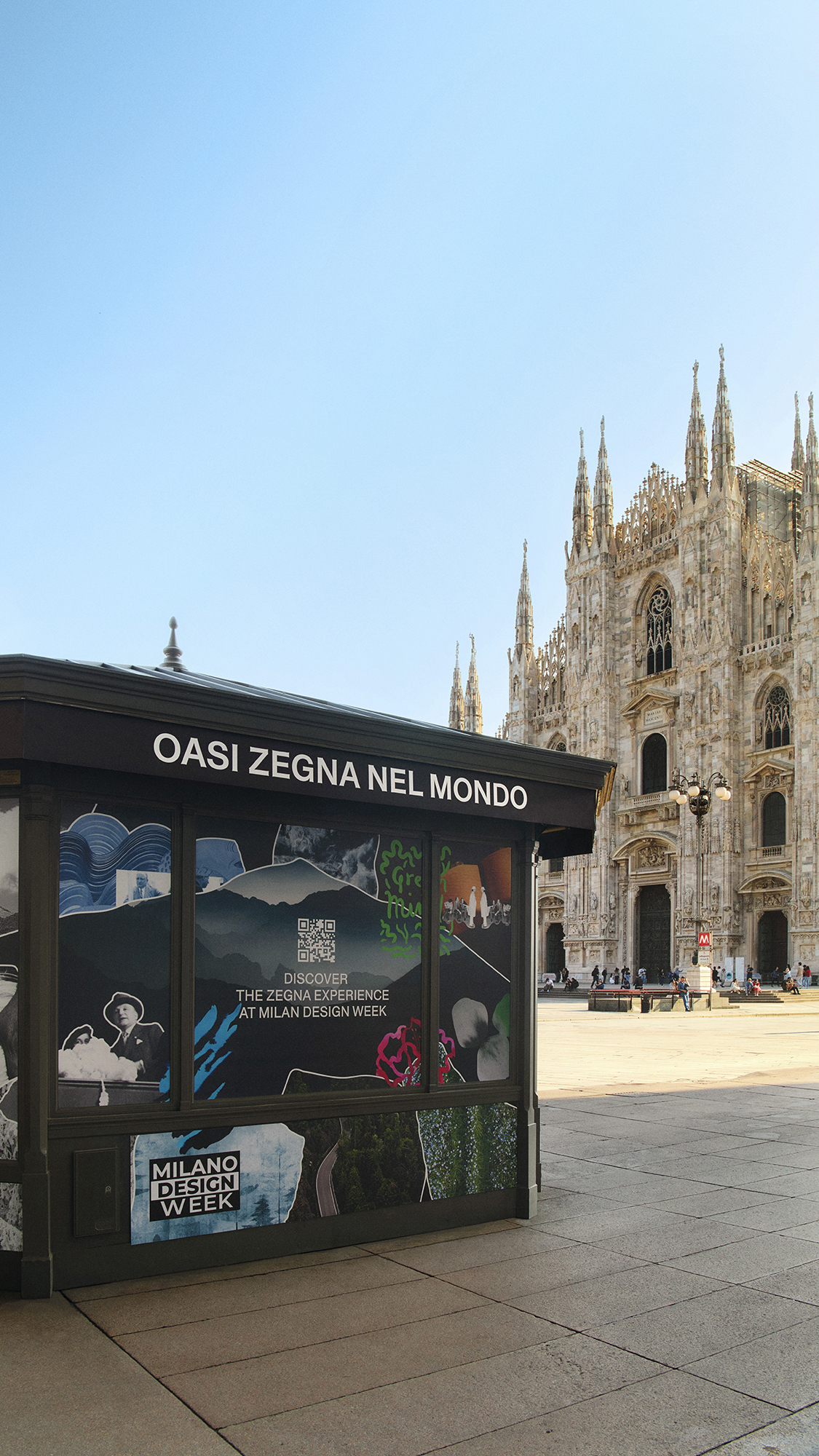
Zegna staged something of a takeover of Milan as it released its new Rizzoli tome, Born In Oasi Zegna. Named after the 100km of forested land north of Milan in the Biella Alps where its founder Ermenegildo Zegna initiated a reforestation programme in 1910, the book marked a moment for the brand to celebrate both its values and association with the city of Milan. In celebration, mini Zegna-branded newsstands (‘edicolas’) that are famously found on most corners were giving out limited-edition tote bags, while over in the piazza in front of the landmark Duomo, tulips transported in from the area were being planted in the square’s new flower beds. ’The project aims to convey the value and urgency of respect for the Earth and nature, as well as the importance that urban green spaces can bring people closer to natural ecosystems and the protection of biodiversity and social responsibility,’ shared the brand, ’concepts that are fundamental to Oasi Zegna.’







